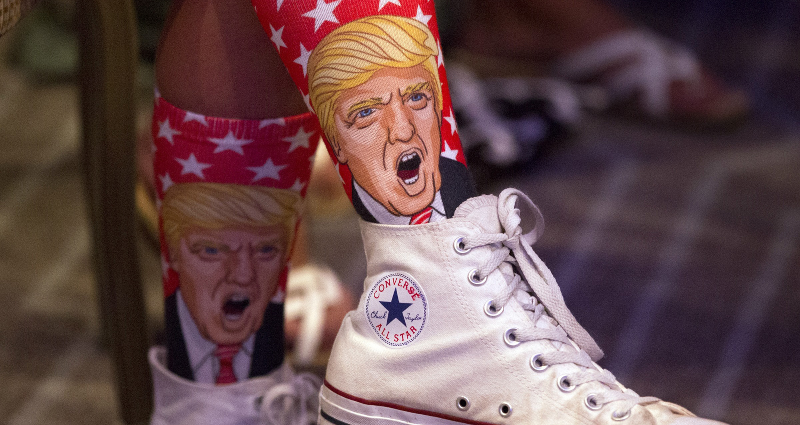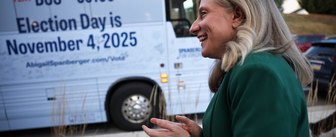Hello, I'm Will Jordan and welcome to the Pulse.
Trump's faces another week of tough headlines, Romney's campaign tops Trump's, and Clinton keeps it together
Is Trump in meltdown?
That appears to be the conclusion of Time Magazine. A Hillary Clinton received a substantial convention bounce and continues to lead by six or seven points. Several polls put her ahead by double digits, both nationally and in enough battleground states to push her up to 273 electoral votes of 270 needed. Since the 1950s, no candidate has gone on to win the popular vote when trailing in the polls two weeks after the conventions. The two week mark was Thursday. So, Clinton is undeniably in a strong position, and Trump has spent the week stirring new controversies of his own, perhaps snuffing out any opportunity for immediate recovery. Has the pageantry of the Democratic National Convention and a series of Trump gaffes really converted enough voters to put it away for Clinton?
Why doubt it?
It’s more that “meltdown” seems too strong a word. The conventions came early this time, and there are still nearly three months until election day. The vicious cycle – bad news leads to bad polls leads to more bad news – could also be exacerbating the illusory polling effects we discussed recently, not changing minds but making Republicans less likely to talk to pollsters. The research I cited was actually based on a study of a similar period in 2012: within two weeks of the Democratic convention, the infamous “47%” video came out, adding to a cycle of negative stories and bad polls for Romney. But polls narrowed again when the first debate reversed the momentum, and Obama fell back to his narrower pre-convention lead.
What’s stopping Trump from making a comeback?
The problem with the Romney-Trump analogy is the similarities pretty much end there. Between campaign and joint fundraising efforts Mitt Romney ended July 2012 with $185.9 million in the bank; Trump ended July with $74 million. By the end of August Mitt Romney had opened 28 field offices in Florida, a state he could not easily win without; Trump, who needs to win Florida at least as badly, has opened one office there. One! (OK, after this was reported, the campaign announced plans to open more). By mid-August 2012, the Romney campaign and allied groups had spent $273 million on radio and television ads. Team Trump so far: $8 million total on television ads. The Clinton campaign is also vastly outpacing Trump in most of these areas.
Can Trump make up for it in other ways?
To be sure, Donald Trump and 2016 are different from Mitt Romney and 2012 in other important ways, which make 2016 more favorable for the Republican. Advertising, for example, is probably less important for a candidate who wins unprecedented free media. Then there are the “fundamentals”. Political scientist Alan Abramowitz created a well-knonw model to measure how non-campaign factors can predict election outcomes. His “Time for Change” model bases its prediction on real GDP growth in the second quarter of the election year, how long the incumbent president’s party has held the White House, and the president’s approval rating. In 2012, his model’s forecast missed Obama’s 52% vote share by only 0.6%; this year, it estimates the Republican should win with 51.4% of the major party vote. Depending on your optimism about Trump's campaign, can look at this a couple ways: Trump is grossly underperforming the fundamentals and will continue to do so – or – Trump has a lot of room to grow.
What about Hillary Clinton?
Also depending on how you judge the above information, you might think Clinton is outperforming the fundamentals or underperforming against Trump’s underwhelming campaign. It's probably a mix of both. Clinton's favorable ratings remain historically low – even if Trump does worse – and she still polls in the low 40s when minor parties are included. Between Wikileaks, new Clinton Foundation revelations, and continued email struggles, there are many reasons to think she is vulnerable. At the same time, the campaign’s efforts to win over educated white voters appears to be succeeding, shutting off many if not most of Trump’s paths to victory. The bottom line is that, even if Trump isn’t in meltdown, right now Clinton is winning – bigly (or is it big league?).
Extra reading:
- Nate Cohn has a theory why Trump is struggling so much in traditionally red states like Georgia and Arizona, but not purple states like Iowa or Nevada.
- A new analysis of 87,000 interviews conducted by Gallup “debunks” the idea that economic anxiety is key to Trump’s success,
- Nate Silver notes that the US has gone seven presidential elections without a double-digit landslide, something that hasn’t happened since the late 1800s.
- ICYMI: I argue the “Right Direction/Wrong Track” question is the wrong place to look for answers about 2016,
The Pulse is a weekly newsletter YouGov has launched ahead of the 2016 primaries and general election to give readers a one-stop-shop for the latest polling-related news from the campaign. In addition to YouGov’s own extensive coverage of the election, The Pulse gives you the five things you need to know about the state of the campaign each week.








